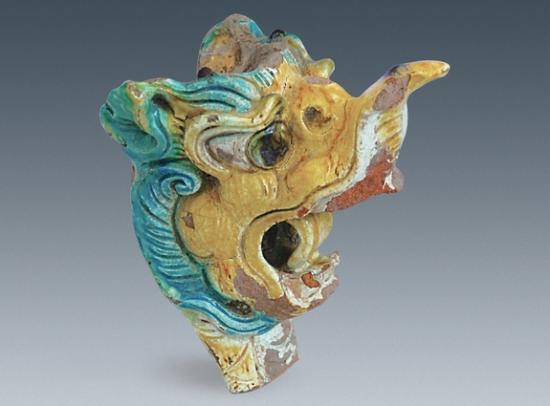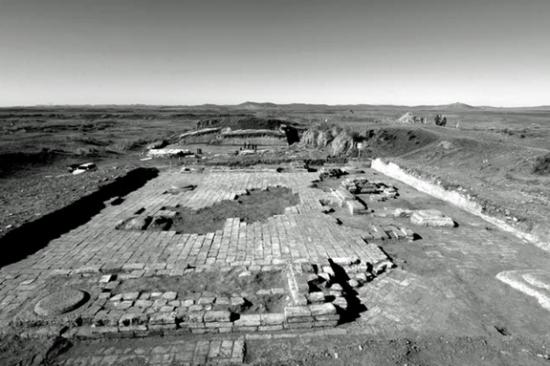Owen Jarus
Source - http://www.livescience.com/51012-xanadu-dragon-heads-discovered.html
 A colorful dragon head made of clay was found in a palace at Xanadu. Credit: Photo courtesy Chinese Cultural Relics
A colorful dragon head made of clay was found in a palace at Xanadu. Credit: Photo courtesy Chinese Cultural Relics
The remains of three colorful dragon heads made of clay have been discovered in a huge palace in Xanadu, a city constructed by the grandsons of Genghis Khan.
The palace sprawls over 9,000 square meters (about 100,000 square feet), or nearly twice the floor space of the modern-day White House.Archaeologists have been excavating the palace, learning how it was designed and decorated.
Made of fine, red, baked clay the dragon heads would have been attached to the ends of beams and used asdecoration. They "are lifelike and dynamic" and "have yellow, blue, white and black coloring" glazed on them, researchers wrote in a report published recently in the journalChinese Cultural Relics. [See Photos of the Dragon Heads & Legendary Xanadu]
The construction of Xanadu, known in China as Shangdu, started in 1256 at a time when the Mongol Empire, led by Möngke Khan (grandson of Genghis Khan), was in the process of taking over China. After Möngke Khan's death in 1259, his successor, Kublai Khan (also a grandson of Genghis), finished the conquest of China.Kublai had helped design Xanadu and when he became ruler he used the city as China's capital during the summer months.
"The site is composed of a palatial district, an imperial city and an outer city, containing remains of three layers of city walls, and occupies an area of 484,000 square meters [about 120 acres]," the archaeologists wrote in their report.
 The palace where the dragon head was found sprawls over 9,000 square meters (about 100,000 square feet) of space. Credit: Photo courtesy Chinese Cultural Relics
The palace where the dragon head was found sprawls over 9,000 square meters (about 100,000 square feet) of space. Credit: Photo courtesy Chinese Cultural Relics
While Xanadu was occupied only briefly, being destroyed in 1368, it became a place of legend, its name romanticized in popular culture as awondrous exotic place where one of the most powerful rulers in the world held court. The discovery of the dragon heads, and other remains from Xanadu, paints a picture of what the site looked like.
While the dragon heads are some of the most eye-catching finds at the palace, archaeologists also discovered a type of ramp called "mandao," meaning "path for the horses" inChinesewhich allowed horses and vehicles access to the palace.
These ramps "would have been strongly connected to the pastoral way of life of the Mongols," the archaeologists wrote.
The ramps were important because horses and pastoral animals were an essential part of Mongolian life. Recent research suggeststhat an unusually wet climate in Mongolia helped these animals flourish in Genghis Khan's time, helping him and his successors conquer a vast amount of territory.
Archaeologists also found artifacts showing more of the rich colors that would have been seen by those who set foot in Xanadu at the time. These artifacts include the remains of aclayfish head whose body "is glazed yellow and green" with "bright and lifelike" scales, the archaeologists wrote.
Eave-end tiles and dripstones, "decorated with blue-and-yellow patterns in the shape of dragons or birds," were also found, the archaeologists said. Eave end tiles and dripstones form part of the roof. Aside from being decorative the dripstones helpeddeflect rainwater.
Excavations were conducted at Xanadu in 2009 by a team from Inner Mongolia Normal University, the Inner Mongolian Institute of Cultural Relics, and the Archaeology and Inner Mongolian Institute for Cultural Relics Conservation. The team's report was initially published, in Chinese, in the journal Wenwu. It was translated into English and published in the most recent edition of Chinese Cultural Relics.